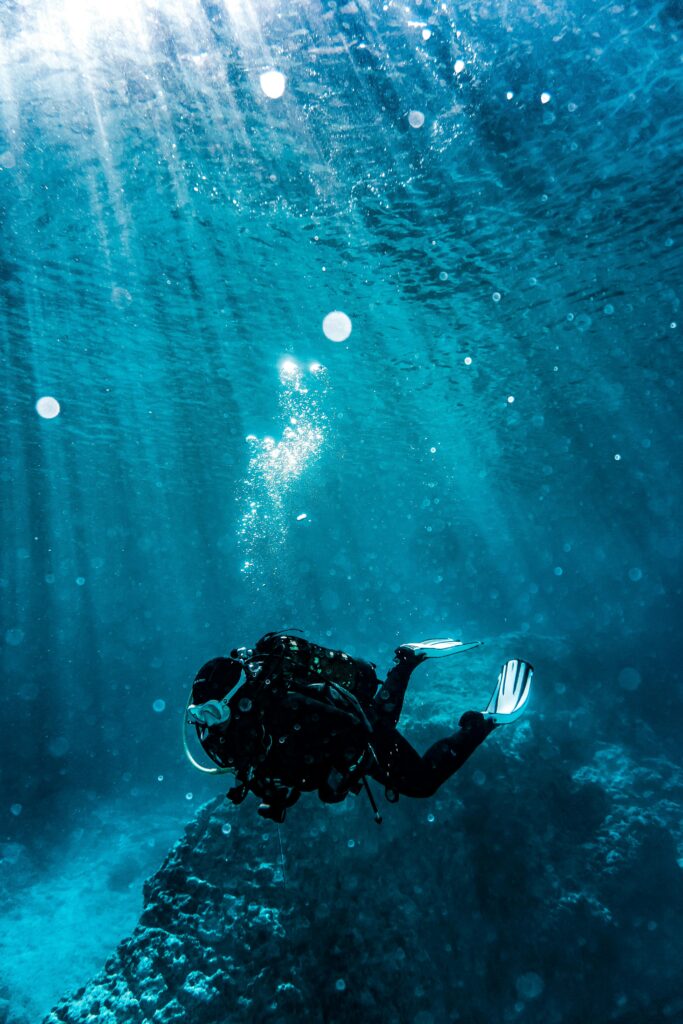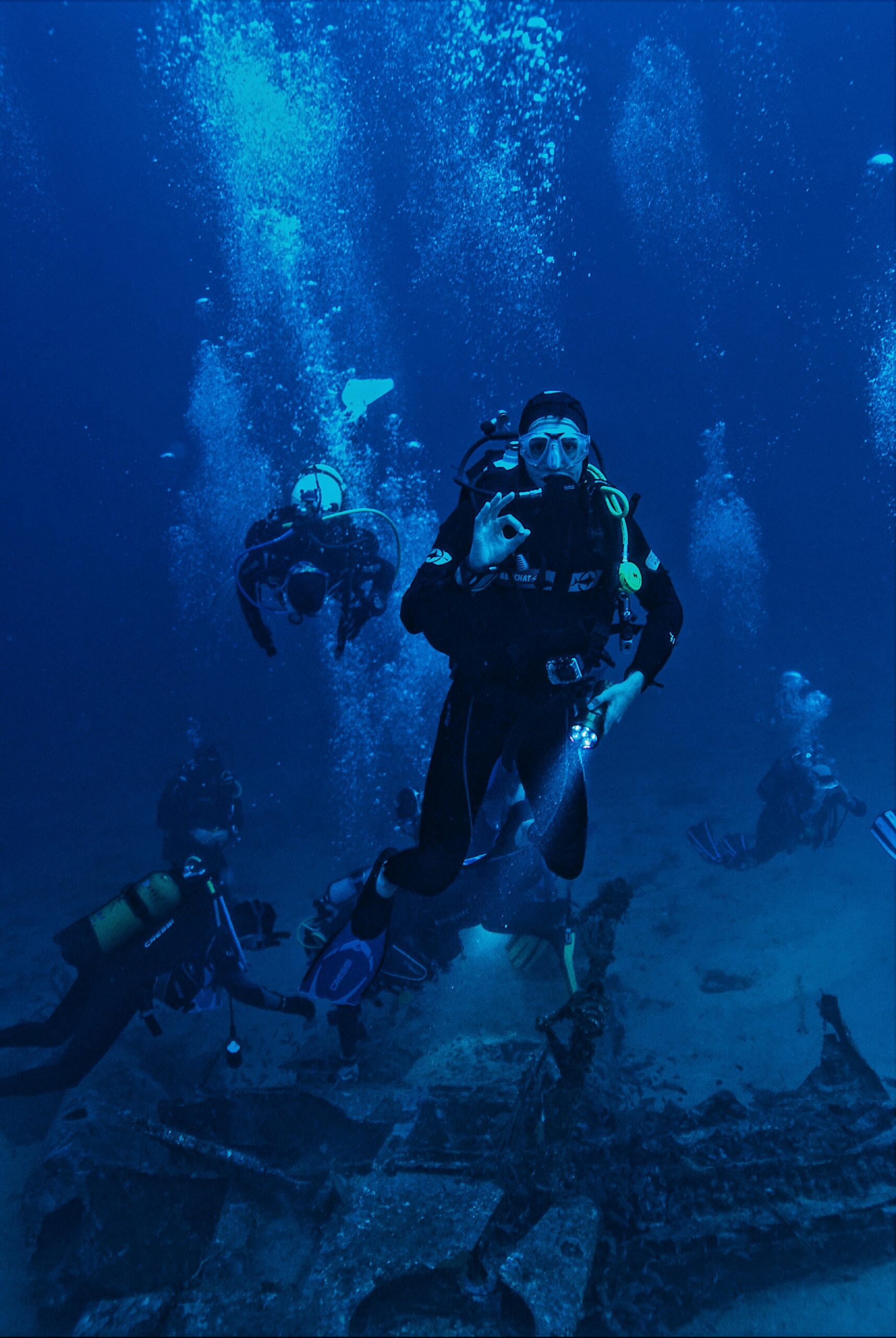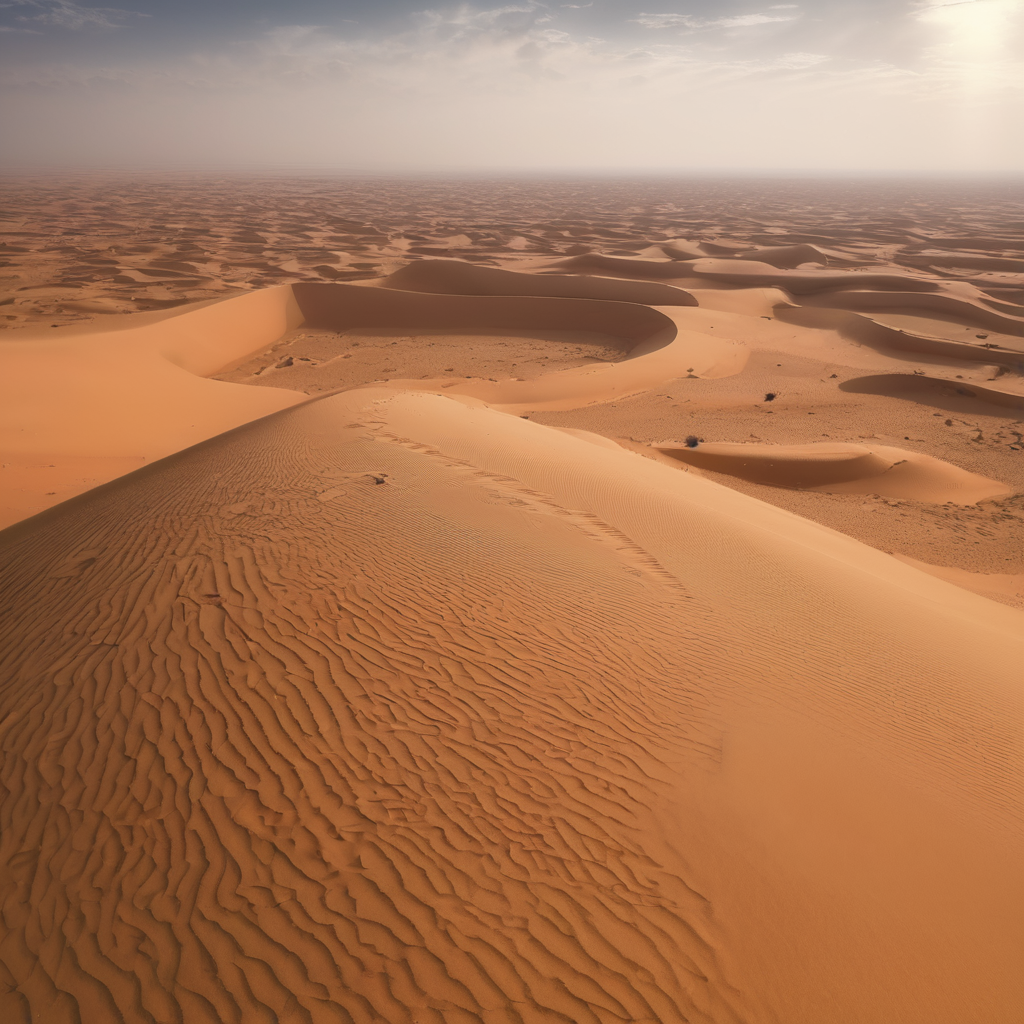Scuba diving offers an unparalleled window into the underwater world, allowing enthusiasts to explore vibrant coral reefs, encounter diverse marine life, and witness breathtaking underwater landscapes. Choosing the right destination is crucial for an unforgettable diving experience, as each location offers unique underwater environments and ecosystems. In this article, we will explore the top 10 scuba diving destinations worldwide, each promising an adventure that will leave you in awe of the ocean’s wonders.
The Great Barrier Reef’s Size and Biodiversity
The Great Barrier Reef, located off the coast of Queensland, Australia, is the world’s largest coral reef system, stretching over 2,300 kilometers (1,430 miles). It comprises approximately 2,900 individual reefs and 900 islands, covering an area of about 344,400 square kilometers. This extensive ecosystem is visible from space and is often considered one of the most remarkable natural wonders on the planet.
The reef’s biodiversity is unparalleled, hosting a vast array of marine life. It is home to over 1,500 species of fish, 411 types of hard coral, and a myriad of other creatures, including mollusks, sea snakes, and marine turtles. The reef also supports a variety of birds and marine mammals, such as dolphins and whales. This vibrant biodiversity not only makes the Great Barrier Reef a crucial habitat but also a significant site for scientific research and ecotourism. The interdependent relationships among the reef’s inhabitants create a complex and dynamic environment, crucial for maintaining the ecological balance.
Highlight of Key Dive Sites: Cod Hole, Osprey Reef
Cod Hole and Osprey Reef are two of the most famous dive sites in the Great Barrier Reef, each offering unique underwater experiences that attract divers from around the world.
Cod Hole, located near Lizard Island, is renowned for its close encounters with the large and friendly potato cod. These gentle giants often approach divers, providing exceptional photo opportunities. The dive site features clear waters, vibrant corals, and an abundance of marine life, including reef sharks, moray eels, and colorful parrotfish. The relatively shallow depths and excellent visibility make Cod Hole suitable for divers of all skill levels.
Osprey Reef, part of the Coral Sea, is another iconic dive site known for its dramatic underwater topography and diverse marine life. The reef is famous for its shark feed dives, where divers can witness grey reef sharks, whitetip reef sharks, and even the occasional hammerhead shark up close. The site’s steep walls, covered in soft corals and gorgonians, drop to depths exceeding 1,000 meters (3,280 feet), creating a breathtaking backdrop for divers. Osprey Reef’s remote location ensures pristine conditions and less crowded dive experiences, making it a must-visit for advanced divers seeking adventure.
Best Time to Visit the Great Barrier Reef
The best time to visit the Great Barrier Reef is during the Australian winter and spring, from June to November. During these months, the weather is generally dry and mild, with average temperatures ranging from 23°C to 29°C (73°F to 84°F). The cooler water temperatures and reduced rainfall lead to excellent underwater visibility, often exceeding 30 meters (98 feet), making it ideal for diving and snorkeling.
June to November is also the prime time for witnessing some of the reef’s most spectacular marine events. Between June and August, visitors may encounter migrating humpback whales and dwarf minke whales. The annual coral spawning, typically occurring after the full moon in October or November, is another incredible natural phenomenon where the reef’s corals release eggs and sperm into the water simultaneously, creating a mesmerizing underwater display.
While the summer months from December to February bring warmer water temperatures, they also coincide with the wet season, characterized by higher humidity, frequent rainfall, and potential cyclones. However, this period can still offer rewarding experiences, particularly for those interested in seeing the reef’s juvenile marine life and fewer tourist crowds. Planning a visit during the optimal months ensures a memorable and enjoyable experience at this UNESCO World Heritage site.
Explanation of Raja Ampat’s Marine Biodiversity
Raja Ampat, located in Indonesia’s West Papua province, is renowned for its extraordinary marine biodiversity. This archipelago, comprising over 1,500 small islands, cays, and shoals, is situated in the Coral Triangle, the heart of the world’s coral reef biodiversity. Raja Ampat’s waters are home to approximately 75% of the world’s known coral species, making it one of the richest coral reef ecosystems on the planet.
The marine life in Raja Ampat is incredibly diverse, with over 1,500 species of fish, 600 species of coral, and numerous other marine organisms such as mollusks and crustaceans. The region supports a variety of habitats, including coral reefs, mangroves, seagrass beds, and deep-sea environments, each teeming with unique species. Notable inhabitants include the majestic manta rays, wobbegong sharks, and a myriad of colorful reef fish like parrotfish, angelfish, and butterflyfish. The rich nutrient upwelling from the deep ocean currents contributes to the high productivity and biodiversity of the area, making it a vital site for marine conservation and research.
Overview of Dive Sites: Cape Kri, Misool Island
Cape Kri and Misool Island are two of the most celebrated dive sites in Raja Ampat, each offering exceptional underwater experiences that highlight the region’s astounding biodiversity.
Cape Kri, located in the central area of Raja Ampat, is famous for its astonishing marine life density and variety. This dive site holds the world record for the highest number of species counted on a single dive, with over 374 species documented. Divers can expect to encounter large schools of barracuda, trevally, and snappers, as well as reef sharks, turtles, and a plethora of smaller reef fish. The vibrant corals, sponges, and sea fans create a stunning underwater landscape, providing ample opportunities for both novice and experienced divers to enjoy.
Misool Island, situated in the southern part of Raja Ampat, is another must-visit dive destination. The waters around Misool are known for their dramatic underwater topography, including pinnacles, walls, and caves, adorned with colorful soft corals and gorgonian sea fans. Misool’s dive sites are often frequented by manta rays, pygmy seahorses, and a wide variety of nudibranchs. The region’s protected marine area ensures healthy coral reefs and abundant marine life, making it a paradise for underwater photographers and marine enthusiasts. Key sites around Misool include Boo Windows, with its famous swim-throughs, and Magic Mountain, where manta rays are commonly spotted.

Recommended Season for Diving in Raja Ampat
The best time to dive in Raja Ampat is during the dry season, which runs from October to April. During these months, the weather is typically dry and sunny, with calm seas and excellent visibility, often exceeding 30 meters (98 feet). This period is ideal for diving as the conditions are most favorable, allowing divers to fully appreciate the vibrant marine life and stunning underwater landscapes.
From October to April, divers can also witness the spectacular manta ray aggregations at sites like Manta Sandy and Manta Ridge, where these gentle giants come to feed and be cleaned by smaller fish. The water temperatures during this season range from 27°C to 30°C (81°F to 86°F), providing comfortable diving conditions.
While diving is possible year-round in Raja Ampat, the wet season from May to September can bring rougher seas, lower visibility, and stronger currents, which might affect diving conditions. However, some divers prefer this period for its quieter dive sites and the opportunity to experience different marine behaviors and species. Overall, planning a visit during the recommended season ensures a more enjoyable and rewarding diving experience in this marine biodiversity hotspot.
Introduction to the Blue Hole’s Unique Geological Formation
The Blue Hole in Belize is one of the most iconic and intriguing dive sites in the world, renowned for its unique geological formation. This giant marine sinkhole is located near the center of Lighthouse Reef, a small atoll off the coast of Belize. The Blue Hole is circular in shape, measuring approximately 300 meters (984 feet) across and about 125 meters (410 feet) deep, making it one of the largest sinkholes of its kind.
The formation of the Blue Hole dates back to the last Ice Age, around 153,000 years ago, when it was originally a limestone cave system. As sea levels rose, the caves were flooded and eventually collapsed, creating the massive underwater sinkhole we see today. The Blue Hole’s sheer walls and the dramatic drop-off into the depths create an awe-inspiring underwater landscape. Divers can explore a series of ancient stalactites and stalagmites that decorate the cave walls, providing a unique glimpse into the geological history of the region. The clear, deep blue water and the striking contrast with the surrounding reef make the Blue Hole a visually stunning natural wonder.
Notable Marine Species and Underwater Experiences
Diving in the Blue Hole offers a unique underwater experience, characterized by its distinct geological features and the diverse marine life that inhabits the area. While the Blue Hole is not known for its coral formations, it is home to a variety of notable marine species that attract divers from around the globe.
One of the highlights of diving in the Blue Hole is encountering the resident Caribbean reef sharks, which are often seen patrolling the depths. Divers might also spot bull sharks and hammerhead sharks, adding an element of excitement to the dive. The Blue Hole’s walls are adorned with sponges and small coral formations, providing habitat for numerous smaller fish and invertebrates. As divers descend into the depths, they can explore the ancient cave formations, including impressive stalactites that hang from the overhanging cave ledges at depths of around 30 to 40 meters (98 to 131 feet).
In addition to the thrilling shark encounters, divers can experience the transition from the clear, sunlit upper waters to the darker, cooler depths where the cave formations become more prominent. This change in environment offers a fascinating glimpse into the underwater topography and the unique ecological niches within the Blue Hole.
Optimal Times for Diving in the Blue Hole
The best time to dive the Blue Hole in Belize is during the dry season, which runs from April to June and November to mid-January. During these months, the weather is typically more stable, with calm seas and excellent visibility, often exceeding 30 meters (98 feet). These optimal conditions allow divers to fully appreciate the stunning geological features and the marine life that inhabit the Blue Hole.
The water temperatures in the Blue Hole remain relatively warm year-round, ranging from 24°C to 29°C (75°F to 84°F), making it comfortable for diving in any season. However, the dry season offers the most favorable conditions for underwater exploration, with fewer chances of rain and storms that can affect sea conditions and visibility.
While diving is possible outside of the dry season, the period from mid-January to March can bring cooler temperatures and higher winds, which might lead to choppier seas and reduced visibility. Additionally, the rainy season from June to October can result in more frequent storms and less predictable diving conditions. Therefore, planning a visit during the recommended months ensures a more enjoyable and safe diving experience, allowing divers to make the most of their adventure in the Blue Hole, one of the world’s most extraordinary natural wonders.
Explanation of the Galápagos’ Unique Ecosystem
The Galápagos Islands, located in the Pacific Ocean about 1,000 kilometers (620 miles) off the coast of Ecuador, are renowned for their unique and diverse ecosystem. This archipelago, consisting of 13 major islands and numerous smaller islets and rocks, is a living laboratory of evolutionary biology, famously studied by Charles Darwin. The islands’ isolation and varying climates across different altitudes and locations create distinct habitats that support an incredible variety of life forms found nowhere else on Earth.
The Galápagos ecosystem is characterized by its high levels of endemism. Many species of plants, animals, and marine life are unique to the islands. For example, the Galápagos tortoises, marine iguanas, and the famous Darwin’s finches are all endemic species. The marine environment around the islands is equally remarkable, influenced by the convergence of several ocean currents, including the cold Humboldt Current and the warm Panama Current. This creates nutrient-rich waters that support a diverse range of marine life, from tiny plankton to large predators like sharks and whales.
The archipelago’s varied habitats include lush highland forests, arid lowlands, volcanic landscapes, and pristine beaches. These diverse environments provide unique conditions that foster the development of species with specialized adaptations. The Galápagos Marine Reserve, one of the largest and most biologically diverse marine protected areas in the world, further safeguards the incredible biodiversity of the region, ensuring that the delicate balance of this unique ecosystem is maintained for future generations.
Key Dive Sites: Darwin Island, Wolf Island
Darwin Island and Wolf Island are two of the premier dive sites in the Galápagos, offering unparalleled underwater experiences that attract divers from all over the world.
Darwin Island, often hailed as one of the best dive sites on the planet, is renowned for its extraordinary marine life. The waters around Darwin Island teem with large schools of fish, dolphins, and a variety of shark species, including hammerhead sharks, Galápagos sharks, and whale sharks, especially from June to November. The famous dive site known as “Darwin’s Arch” provides an awe-inspiring backdrop where divers can observe the spectacular underwater ballet of these majestic creatures. The strong currents and abundant marine life create thrilling diving conditions, making it a must-visit for experienced divers.
Wolf Island, located near Darwin Island, is equally famous for its rich marine biodiversity. Known as the “Shark Diving Capital of the World,” Wolf Island offers divers the chance to see massive schools of hammerhead sharks, as well as silky sharks, whale sharks, and occasionally, tiger sharks. The underwater terrain of Wolf Island includes caves, pinnacles, and sheer walls, providing diverse habitats for marine life. The site is also home to large populations of sea turtles, eagle rays, and various species of reef fish. The dramatic underwater scenery and the presence of such a wide array of marine predators make Wolf Island an exhilarating diving destination.
Best Periods to Visit the Galápagos for Diving
The best periods to visit the Galápagos Islands for diving are during the warm season from December to May and the cool season from June to November, each offering unique underwater experiences.
From December to May, the warm season brings calmer seas, warmer water temperatures ranging from 24°C to 30°C (75°F to 86°F), and excellent visibility. This period is ideal for divers who prefer more comfortable conditions and wish to see the vibrant coral reefs, colorful reef fish, and breeding marine iguanas. The warm season also offers opportunities to witness the courtship displays of various bird species and the arrival of the green sea turtles for nesting.
The cool season, from June to November, is characterized by nutrient-rich waters brought by the Humboldt Current, resulting in an explosion of marine life. Water temperatures during this period range from 18°C to 24°C (64°F to 75°F), and while the seas can be rougher, the rewards are immense. This is the prime time for encounters with large pelagic species, such as whale sharks, hammerhead sharks, and other shark species at dive sites like Darwin and Wolf Islands. The cooler waters also attract large schools of fish and marine mammals, making for thrilling dives with abundant wildlife.
Both seasons offer unique advantages, and choosing the best time to visit depends on the specific marine encounters and diving conditions preferred. Planning a trip during these optimal periods ensures an unforgettable diving experience in the extraordinary underwater world of the Galápagos Islands.
Overview of Palau’s Marine Environment
Palau, an archipelago in Micronesia, is renowned for its pristine marine environment and rich biodiversity, making it one of the top diving destinations in the world. The country’s waters are home to over 1,400 species of fish and 700 species of coral, creating a vibrant underwater ecosystem that attracts divers and marine biologists alike. The diverse marine habitats include coral reefs, blue holes, drop-offs, caves, tunnels, and wartime wrecks, each offering unique underwater experiences.
Palau’s marine environment is characterized by its healthy coral reefs, which are among the most diverse and intact in the world. These reefs provide habitat for a myriad of marine species, including large pelagics such as sharks, manta rays, and barracudas, as well as smaller reef inhabitants like colorful nudibranchs, anemonefish, and pygmy seahorses. The nutrient-rich waters, fed by strong ocean currents, support a dynamic and productive marine ecosystem. Palau is also known for its unique marine lakes, such as Jellyfish Lake, where millions of golden jellyfish migrate daily in a mesmerizing natural spectacle.
The Palauan government has taken significant steps to protect this underwater paradise. The establishment of the Palau National Marine Sanctuary, one of the largest fully protected marine areas in the world, underscores the nation’s commitment to conservation. This sanctuary bans commercial fishing across 80% of Palau’s exclusive economic zone, ensuring the protection and preservation of its marine biodiversity for future generations.
Highlight of Dive Sites: Blue Corner, German Channel
Blue Corner and German Channel are two of the most famous dive sites in Palau, each offering unique and exhilarating underwater experiences.
Blue Corner is widely regarded as one of the best dive sites in the world. Known for its strong currents and abundant marine life, this site offers a thrilling dive for experienced divers. The currents attract large schools of fish, such as jacks, barracudas, and snappers, as well as predators like grey reef sharks, white-tip sharks, and occasionally, hammerhead sharks. Divers often use reef hooks to stay in place while observing the marine life attracted to the nutrient-rich waters. The underwater landscape at Blue Corner includes steep walls covered with soft and hard corals, providing habitat for a diverse range of species. The dramatic drop-offs and the sheer abundance of marine life make every dive at Blue Corner an unforgettable experience.
German Channel, another top dive site in Palau, is famous for its manta ray cleaning stations. Divers have the unique opportunity to watch these majestic creatures up close as they glide gracefully through the water, often congregating at specific points to be cleaned by wrasses and other small fish. The channel was created during the German occupation of Palau in the early 20th century to facilitate phosphate mining. Today, it is a thriving marine habitat. In addition to manta rays, divers can encounter eagle rays, reef sharks, and a variety of macro life, including nudibranchs and ghost pipefish. The sandy bottom, coral formations, and clear waters make German Channel a fascinating site for both pelagic and macro diving.
Best Diving Seasons in Palau
The best time to dive in Palau is from November to April, during the dry season, when the weather is typically sunny, and the seas are calm. During this period, water temperatures range from 27°C to 30°C (81°F to 86°F), providing comfortable diving conditions with excellent visibility often exceeding 30 meters (98 feet). These conditions are ideal for exploring Palau’s diverse dive sites, including Blue Corner and German Channel, ensuring the best possible underwater experience.
The months from November to April are also optimal for witnessing the peak activity of large pelagic species. The nutrient-rich currents during this time attract schools of fish and predators, making for thrilling dives with abundant marine life. Manta rays are frequently seen at cleaning stations like German Channel, and the shark populations are more active, enhancing the overall diving experience.
While diving in Palau is possible year-round, the wet season from May to October can bring heavier rainfall and stronger winds, potentially affecting sea conditions and visibility. However, this period can still offer rewarding dives, especially for those seeking fewer crowds and unique seasonal marine behaviors. Water temperatures remain warm throughout the year, ensuring enjoyable dives in any season.
Planning a diving trip to Palau during the recommended months ensures the best weather conditions, optimal marine life encounters, and the most memorable underwater adventures in this Pacific paradise.
FAQs
Q. What makes the Great Barrier Reef a top scuba diving destination?
A. The Great Barrier Reef in Australia is renowned for its vast biodiversity, vibrant coral formations, and clear waters, offering divers an unparalleled underwater experience.
Q. Why is Blue Hole in Belize famous among scuba divers?
A. Blue Hole in Belize is famous for its deep, clear waters, unique geological formations, and the chance to see a variety of marine life, including sharks.
Q. What is unique about diving in the Red Sea, Egypt?
A. The Red Sea in Egypt offers crystal-clear waters, diverse marine life, and spectacular coral reefs, making it a favorite for both novice and experienced divers.
Q. What can divers expect in the Galápagos Islands, Ecuador?
A. Divers in the Galápagos Islands can encounter unique marine species, including hammerhead sharks, whale sharks, and marine iguanas, due to the islands’ isolated location and diverse ecosystems.
Q. Why is Palau considered a prime diving location?
A. Palau is known for its stunning underwater landscapes, including blue holes, drop-offs, and abundant marine life, providing an exceptional diving experience.
Q. What makes the Maldives a top destination for scuba diving?
A. The Maldives offers warm waters, high visibility, and a rich variety of marine life, including manta rays and whale sharks, along with beautiful coral reefs.
Q. How is Raja Ampat, Indonesia, unique for scuba diving?
A. Raja Ampat in Indonesia is celebrated for its incredible biodiversity, pristine reefs, and the highest recorded marine life diversity in the world.
Q. What are the highlights of diving in the Cayman Islands?
A. The Cayman Islands offer excellent visibility, diverse marine life, and famous dive sites like Stingray City and the Kittiwake wreck.
Q. Why should divers visit Sipadan Island, Malaysia?
A. Sipadan Island is known for its rich marine biodiversity, including large schools of fish, turtles, and barracudas, and its unique drop-off points.
Q. What makes Bonaire a preferred destination for scuba divers?
A. Bonaire is praised for its protected marine parks, easy shore diving, and vibrant coral reefs, making it ideal for divers of all levels.
Conclusion
Selecting the right destination for scuba diving can make all the difference in your underwater adventure. The top 10 destinations highlighted in this article each offer something unique, from the extensive coral reefs of the Great Barrier Reef to the incredible biodiversity of Raja Ampat. Whether you’re drawn to the historical wrecks of the Red Sea or the crystal-clear waters of the Maldives, these locations promise unforgettable experiences for scuba diving enthusiasts. Embarking on these underwater journeys not only provides excitement and discovery but also fosters a deeper appreciation for marine life and the importance of conservation efforts to protect these precious ecosystems for future generations.




